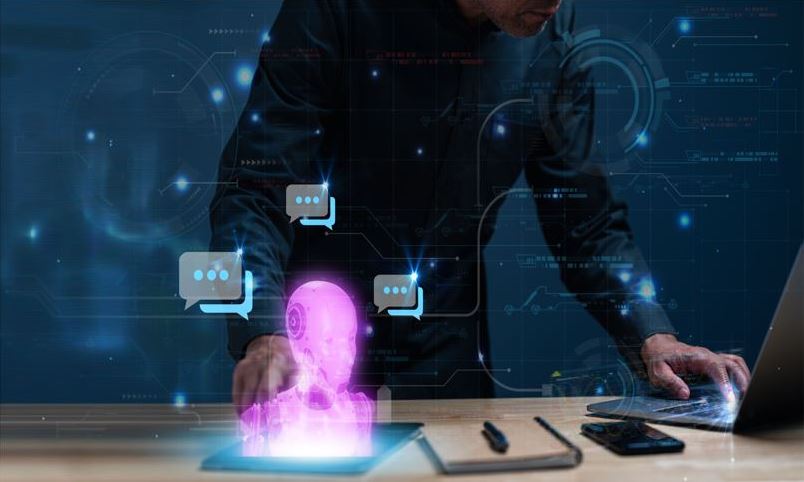Digitized automation enables organizations to make routine tasks faster, simpler, more accurate, and more reliable. Two powerful forms of automation – no-code application development and artificial intelligence – have been on parallel paths of rapid uptake. Now those paths are converging.
No-code application development enables non-technical users to create applications and workflows quickly and easily. Actual coding of the applications is automated, and the resulting workflows can automate business processes. Business investment in no-code and low-code (NCLC) technology had reached $15 billion by the end of 2022 and is expected to quadruple by 2027, according to ISG.
AI can likewise automate routine tasks and data analysis, with lightning execution that manual efforts can’t match. Enterprise adoption of AI grew 13% in 2022, with more than one-third of companies now benefiting from AI and another 42% actively exploring its use, according to IBM.
Now your organization has an opportunity to bring together the parallel paths of no-code and AI. By integrating machine learning (ML) and other types of AI outputs, your business can take advantage of both forms of automation to empower workers, operate more efficiently, and gain a competitive advantage.
No-code, No-worry Automation
A no-code application platform enables any employee to create their own webforms, applications, and workflows with little or no training. They simply drag prebuilt software elements from a library and drop them onto a virtual canvas. They can select templates to build a user interface, specify how forms will function, define data inputs and outputs, and even map a workflow.
Transparent to the user, the code-code tool assembles a complete application or workflow. The software components are verified for strong cybersecurity, so sensitive data remains safe. Built-in APIs integrate with popular commercial software such as Microsoft 365, Google Workspace, Slack, Salesforce, ServiceNow, and DocuSign.
No-code can partially or fully automate processes such as:
- Customer onboarding
- Purchase orders
- Billing and invoicing
- Automated payment setup
- Customer feedback
- Budget requests and approvals
- Procurement requests and approvals
- Job applications
- Employee onboarding and offboarding
- Time and attendance tracking
- Travel and expense approvals
- Time-off requests
- Performance reviews
- Employee feedback
- Teacher Feedback Forms
- Many more
Understanding Today, Predicting Tomorrow
AI takes digitized automation to a whole new level. From website and call center chatbots that automate customer interactions to robotic process automation (RPA) that learns by observing human digital activity, AI is turbocharging use cases in businesses of all types and sizes.
We’ve only scratched the surface of AI capabilities, as exciting new AI offerings demonstrate. Online services like the ChatGPT generative language model and Lensa AI image generator hint at new capabilities that will transform how organizations process data, create intellectual property, and run the business.
Enterprises will increasingly take advantage of ML, a type of AI that can learn from data, make predictions or decisions, and improve on tasks. ML can uncover hidden patterns in large datasets to forecast future trends, such as an increase in customer demand. It can also predict when conditions will meet certain thresholds, such as when equipment needs to be serviced to avoid failure.
IT providers even offer pre-trained ML models you can download or deploy in the cloud. You can use these models for tasks such as extracting information from data feeds, predicting buyer propensities, engineering product features, and more.
Bringing Together No-code and AI
Where are no-code and AI converging? Increasingly, organizations will find ways to integrate the two – either feeding AI outputs into no-code applications or delivering no-code application data to AI models for analysis. Here are just a few promising use cases:
Lead scoring – Lead scoring lets you rank prospects based on behavior and interactions. You can integrate lead data from a no-code workflow with an ML model to analyze that information and automatically assign lead scores. The no-code workflow can then route the right leads to the right sales reps.
Sentiment analysis – Analyzing feedback from social media or surveys can provide new customer insights. You can create a no-code workflow to upload customer feedback to the ML model for analysis. The model can, for example, identify trends or categorize feedback by topic or sentiment. The no-code workflow can then route the results to marketers.
Image categorization – Many organizations deal with large numbers of images. These might include product photos for online catalogs or video feeds of physical assets. AI image recognition can quickly tag and categorize these images based on a wide range of criteria. You can create a no-code workflow to upload product images that are then sorted by the AI tool. The output can be fed back into the no-code workflow for organizing a product catalog or tracking assets in dashboards or reports.
Predictive maintenance – Predictive maintenance can help your business avoid the downtime of unexpected equipment failures. ML models can analyze data from sensors and other sources to forecast when maintenance is required. No-code workflows can route ML outputs to the right stakeholders to stay informed of equipment conditions. The same workflow can track when equipment has been repaired or replaced.
There are many other possibilities for using AI outputs to populate no-code forms, applications, and workflows. For example, you can apply AI to large customer datasets to clean the data – removing duplicates, recognizing and fixing errors, normalizing formatting, and so on. That clean output can then be fed into many no-code workstreams.
The more your organization takes advantage of both no-code and AI, the more use cases you’ll find for combining the two. You’ll gain more efficient processes, deeper insights, improved decision-making, and more effective automation across the enterprise.





